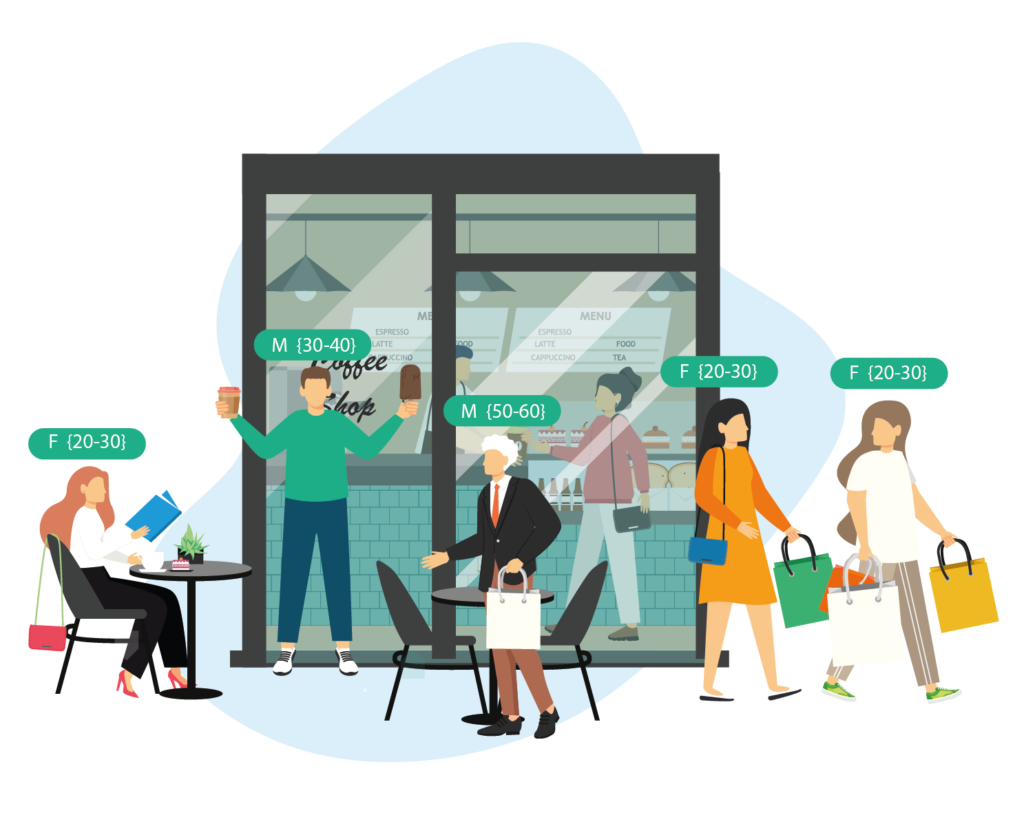Using Capture Rate to drive retail performance
We know what Capture Rates are, but how can they be used to deliver a positive ROI? And why can’t we solely rely on footfall data?
Footfall data is key to understanding how bricks and mortar destinations perform – in virtually all locations the more customers there are the more spend is generated. But it doesn’t necessarily explain how successful a store is in attracting customers through its doors, and of course a store can trade badly in even the best of locations.
This is where the Capture Rate comes in. Representing the % of footfall in the street or mall that enters a store (see our blog – Capture Rate – what is it? – for a detailed explanation) the Capture Rate is a direct measure of a store’s trading success. More importantly it tells us whether a store is maximising its trading potential in a particular location.
But the proof of Capture Rate’s value is in the pudding; how it can be used to identify the opportunity for stores in terms of £ sales generated? This is surprisingly simple and amazingly insightful.
In essence Capture Rates enable you to understand “what good looks like” – which ultimately is about a store maximising its sales potential in a particular location – There are four key applications of Capture Rates:
- Identifying underperforming stores
- Understanding the potential of a location
- Evaluating the success of store initiatives and marketing/promotions
- Discovering new store locations
We’re going to briefly talk about each of these benefits but if you haven’t read our first Capture Rate blog “Capture Rate – what is it?” check it out.
Identifying underperforming stores
In our introductory blog we discussed how the Capture Rate can identify outliers in a store network – those stores that are attracting less footfall than would be expected in their locations, and so are underperforming or not maximising their trading potential. The question for this blog is how can this insight be used to drive up sales.
Once the Capture Rate has been identified (by comparing footfall passing the store with footfall entering the store) it can then be compared with the Capture Rate of other stores in the network to establish the degree of variance. For example if the majority of stores have a Capture Rate of 15% with a minority achieving a Capture Rate of 13%, then it suggests an opportunity for stores with the lower Capture Rate to uplift their performance.
The key question is then what it means for the store in practical terms. What does it have to achieve for it to increase its Capture Rate? Essentially it means that the store has to attract more customers from the street or mall. The good news is that for this to be translated into additional sales a store doesn’t haven’t have to increase its conversion rate or basket value – it simply has to attract more shoppers through its doors and convert them into sales in the same proportion and at the same value as they do currently.
Repeated evidence has shown us that only a very small uplift in a store’s Capture Rate has a significant – and multiplier – impact on its sales; as much as five times or even more than that!
Understanding the potential of the location
In an ideal world, footfall in a store’s location would rise from year to year, but the growth of online spending has meant that the long term trend is now a steady decline in footfall in retail destinations of between 1% and 2% a year.
Benchmarking footfall outside of the store, with the average for the UK, the region and even the type of destination it is, demonstrates whether the performance of that particular trading location is acceptable (whether it is on par with the benchmarks) or whether its future potential as a viable trading location is limited (underperforming the benchmarks).
Evaluating the success of store initiatives and marketing/promotion
However effective a promotional campaign or store initiative, store footfall might not rise if footfall in the location is declining. However, static store footfall versus declining external footfall means an increasing Capture Rate. So, in the face of a challenging trading location, that store – by virtue of the store initiative or promotional campaign – will have increased its market share in that location which is a clear positive ROI.
Discovering new store locations
In addition to improving the performance of existing stores, Capture Rates also support the search for new trading locations. Once a retailer has established its “average” Capture Rate – the Capture Rate it would expect to achieve given a normal trading situation – then this can be used to evaluate whether a particular location has sufficient footfall to deliver the required number of customers. This is a simple but effective multiplier – a Capture Rate of 10% requires footfall in the destination to be 10 times of the stores footfall.
There is clearly no denying the fact that the Capture Rate is a hugely under-utilised but enormously valuable metric in retail evaluation. The next step is understanding how you can gather this metric within your business; and as with all aspects of the Capture Rate, it is a simple process with a very light touch on your business – no complexity and speedy implementation. What’s not to love?
Footfall Analytics
Boost performance with actionable insights based on AI-driven footfall analytics
Learn more
MRI OnLocation UK Monthly Commentary – March 2024
Retail footfall shows signs of stabilising as early Easter break provides a modest rise from February Each month MRI OnLocation delivers insights on retail performance for UK retail destinations. March saw a modest rise in retail footfall across the …

